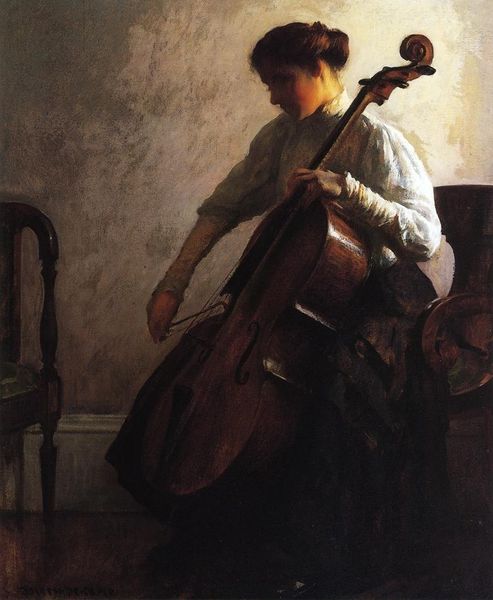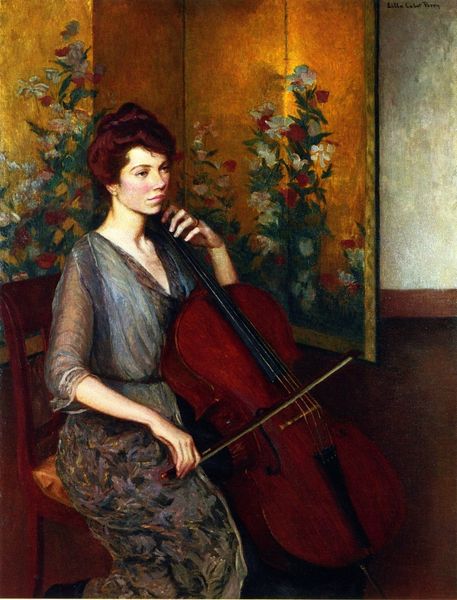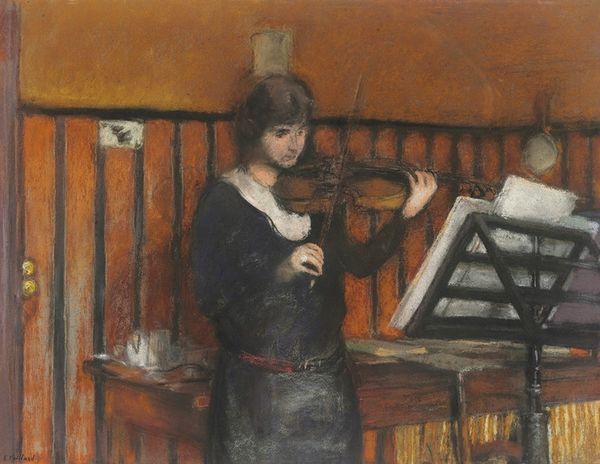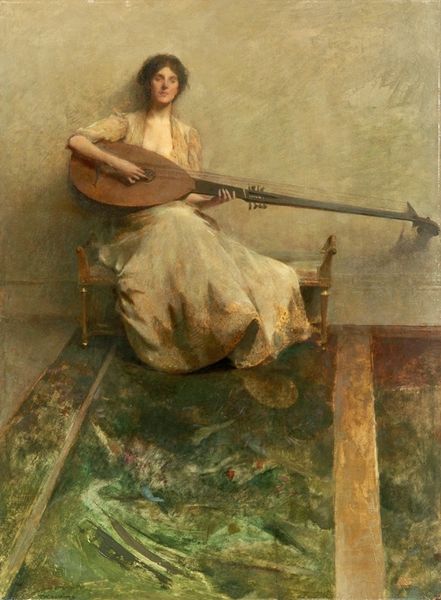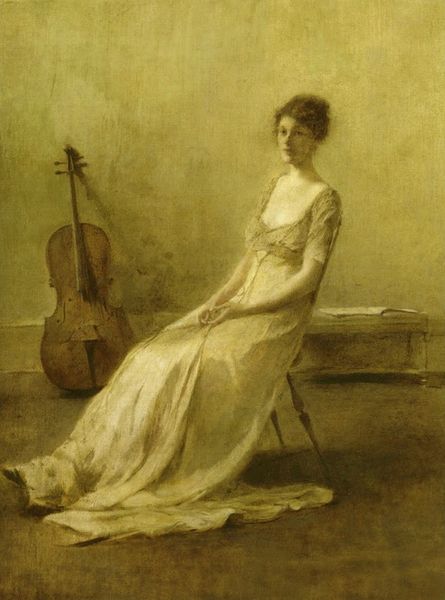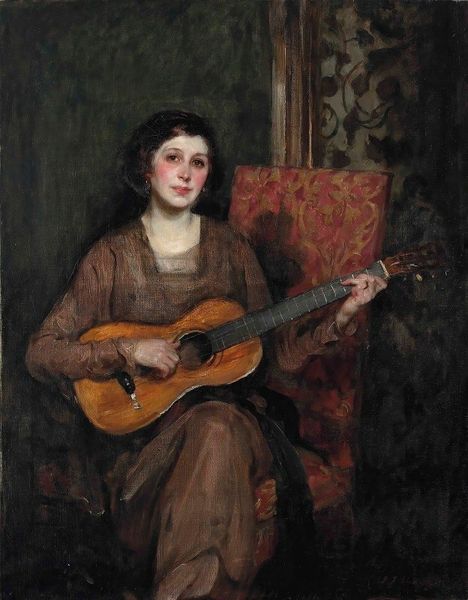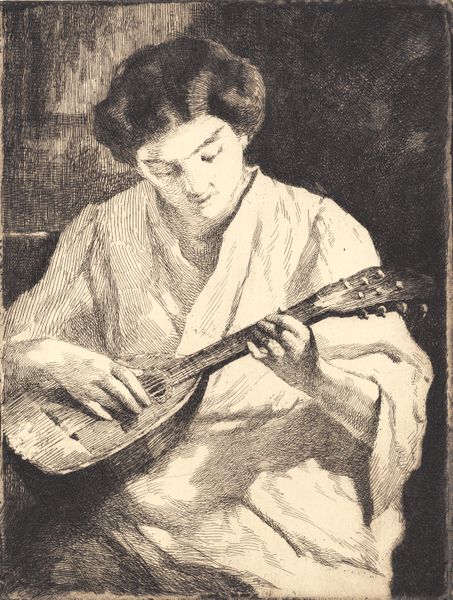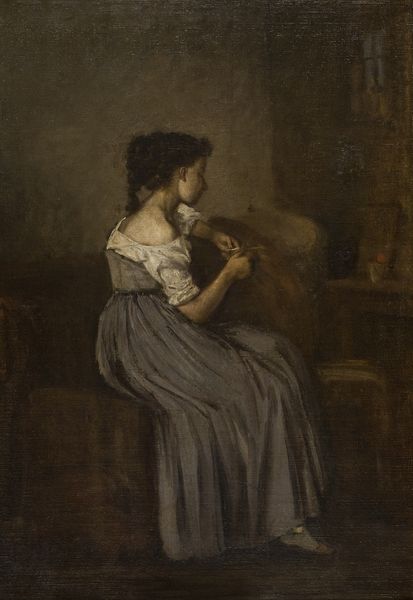
Copyright: Public domain
Art Historian: Editor: Lilla Cabot Perry's "Girl Playing a Cello," from 1891. It's an oil painting, and there’s a stillness in this work... a certain quietude achieved by her muted palette. What stands out to you? Art Historian: My attention is drawn immediately to the composition. Notice how Perry has positioned the subject slightly off-center, creating a subtle tension. Furthermore, observe how the verticality of the cello contrasts with the curve of the girl's posture. What might this juxtaposition signify to you in terms of form? Editor: Well, I see the lines created by the cello almost divide the painting. It contrasts with the girl's figure, creating a sense of contained energy, but I don't quite get the impact. Is there something deeper you think? Art Historian: Let us analyze the colour scheme. Note the prevalence of warm, earthy tones – browns, ochres, creams. How do these hues interact with the cool black of the cello? Is it a statement of mood or artistic strategy, or both perhaps? Editor: I see. The warm colours are definitely inviting, creating a sense of intimacy despite the strictness of the girl’s profile. The black cello is harsh against all the curves... perhaps symbolising something of the effort in the skill? Art Historian: An astute observation. The strategic deployment of chiaroscuro, light and shadow, across the figure should not be overlooked. The soft light illuminating the girl's face pulls focus towards it. Does the way the light is handled suggest a psychological state to you? Editor: It's amazing to hear you explain that. I hadn't considered how the colours add meaning, how each shadow seems so thoughtfully placed to amplify the quiet mood. Art Historian: Indeed. Hopefully this inspires you to consider the intrinsic aesthetic and philosophical dimensions inherent within visual art forms.
Comments
No comments
Be the first to comment and join the conversation on the ultimate creative platform.

